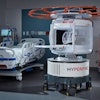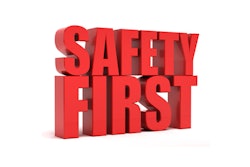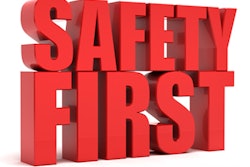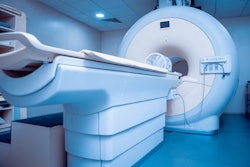MRI safety oversight is spotty at best, with gaps "big enough to drive a truck through," according to Tobias Gilk, founder of Gilk Radiology Consultants in Overland Park, KS, and senior vice president of Radiology-Planning in Mission, KS.
The situation impacts not only patient care but also how radiology staff offer that care, and it must be mitigated, Gilk told AuntMinnie.com in an interview during which he outlined his experience trying to track down information on a few MRI accidents that occurred last year -- one in California that involved a Kaiser Permanente facility and another in Arizona. In a blog posted on May 21, Gilk used California as a "test case" to paint a picture of the current state of MRI safety oversight, stressing that "it's very likely that whatever I write about California … is probably true about the other 49 U.S. states."
 MRI bed gurney accident, Kaiser Permanente Redwood City, CA. Image courtesy of Tobias Gilk.
MRI bed gurney accident, Kaiser Permanente Redwood City, CA. Image courtesy of Tobias Gilk.
Gilk described his efforts to get a copy of the report about the Kaiser accident from the California Department of Public Health (CDPH), the state's body for licensing hospitals and healthcare providers. It soon became clear that the CDPH may not have even been aware of the incident -- likely indicating that the hospital did not report it.
Although the CDPH did begin an investigation, it ended up referring the case to the U.S. Centers for Medicare and Medicaid Services (CMS). Cal/OSHA also conducted a review. Both were completed, but when questioned, the CDPH admitted that no state-level administrative action against the facility had been taken.
The Kaiser situation illuminates the inconsistency and confusion regarding MRI safety oversight, Gilk noted (start at 6:30). State regulators don't have much support for acting in these situations; they must turn over the accident investigation to CMS.
He also spoke about how the way MRI safety is tracked -- or not -- affects patient care (start at 12:17), the ACR's efforts to establish best safety practices for MRI (start at 16:17), who exactly is held responsible for MRI safety (start at 18:40) -- spoiler alert: the radiologist, and what hospitals and their radiology departments can do to ensure MRI safety, even in the absence of clear directions (start at 22:05).
Click below for the full interview. It's also available as a podcast.



.fFmgij6Hin.png?auto=compress%2Cformat&fit=crop&h=100&q=70&w=100)




.fFmgij6Hin.png?auto=compress%2Cformat&fit=crop&h=167&q=70&w=250)











